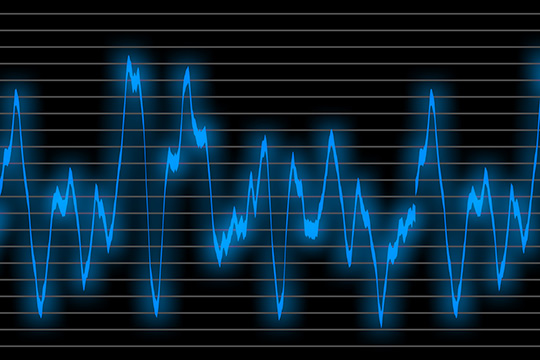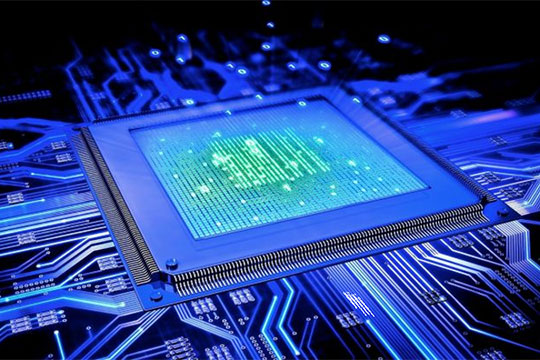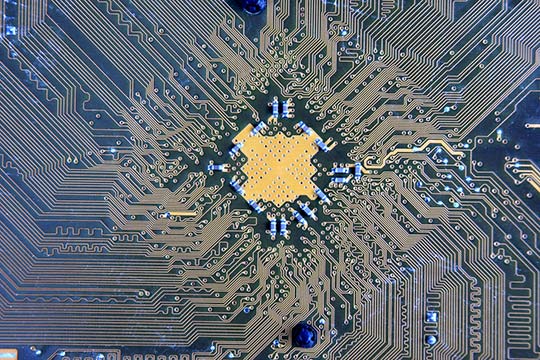TECHNOLOGY FOCUS
Power distribution is becoming an increasing challenge in today's electronic designs, small and big alike. Properly designed power distribution is essential also for good signal integrity and to avoid electro-magnetic interference problems.
Parallel memory bus speeds of 4800 to 5200MHz are becoming main-stream, GDDR7 is using 32Gbps signaling, high-end communications gears moving rapidly beyond 112 Gbps transfer speeds; signal rise and fall times shrink to below 10 ps.
As a result, laminate and copper characteristics, surface roughness, glass-weave effects and glass structure, frequency-dependent trace and component parameters, material and structural anisotropy, inter-symbol interference (ISI), jitter and finite bit-error-rate (BER) all need to be considered. With the dominant utilization of equalization and pre-emphasis, validations even with masks and eye diagrams may not be sufficient, giving way to Channel Operating Margin (COM) and Effective Return Loss (ERL) and a slew of statistical aggregated crosstalk definitions.
Today, equally challenging is the proper design of power distribution. A multitude of different supply voltages and signaling levels come with reduced timing and noise margins. The allowed noise on signals and on supply rails decreases and the increasing density and bandwidth of interconnects inter-link the previously independent power-integrity, signal-integrity and EMC design domains.


COURSE CONTENT
This thoroughly updated and renewed unique course is based on decades of successful design experience of satellite circuits and high-end computer systems. It provides a unified analysis and design approach to the power-integrity and signal-integrity disciplines with a brief overview of EMI-prevention tasks in modern digital systems that is necessary to understand the proper signal- and power-integrity design approaches. After a brief summary of basic concepts, the course focuses on the most recent challenges that the digital and mixed analog/digital designers face, with an increased portion devoted to proven power distribution analysis techniques, design methods, solutions and practical details of component selection. The course deals with the underlying physical rules with minimal mathematics. With interactive software and live hardware and software demo illustrations, the various good and bad design choices are explained, and trade-offs are shown for achieving high-performance yet cost-effective designs.
For power distribution and EMC, the course explains the benefits and proper use of impedance profile of the bypass network, how it relates to time-domain design and validation methods and how to estimate and compare the worst-case transient noise of various PDN synthesis techniques. Long-haul crosstalk among different power domains, simulation and measurement solutions for PDN impedances in the tens of microohms are discussed. The key elements of long-term reliability and foundations of robust yet cost-effective designs are explained. For high-speed signal transmission, emphasis is put on the dispersive, potentially anisotropic and lossy nature of PCB and package traces showing the link between rise-time degradation, jitter, eye closure and the frequency-dependent dielectric constant, dielectric loss tangent and copper surface roughness. Link performance is explained in terms of S parameters, Channel Operating Margin and Effective Return Loss.
WHO SHOULD ATTEND
Participants will receive a free copy of the popular book “Power Distribution Design Methodologies” and several of the illustration tools and simulation files shown in the class.
The course is aimed at engineers, scientists and managers facing the combined signal- and power-integrity challenges in electronics designs for the computer, communications, consumer, medical, defense or automotive industries.
Only basic understanding of electronic circuits is assumed, because the course is delivered through practical illustrations and examples and emphasizes the understanding of the underlying physics.
Whether you are already knowledgeable in circuit design or in the theory of signal and power integrity, or new to these topics, you will find many useful tidbits and a solid explanation of the important disciplines.

Day 1,
Common Foundation of Signal and Power Integrity
- Introduction to signal and power integrity
- Comparing signal spectra, time and frequency-domain solutions for SI and PI
- Reflections, matching, terminations
- Characteristic impedance, phase and group delay, termination solutions
- Time and frequency domain solutions, linear networks
- What we need to know about S and Z matrices
- Printed circuit board manufacturing and construction options, core and foil construction, HDI and HDI+
- The art of selecting a good stackup
- What are the important parameters for SI and PI
Examples, live HW and SW demos: Calculation of interconnect parameters, reflection, matching, bandwidth and spectra of SI signals and power noise
Day 2,
Crosstalk and Loaded Interconnects
- Crosstalk and crosstalk-reduction in signal and power integrity
- Metrics in time and frequency domain
- Differential interconnects
- Effects of imbalance, mixed-mode S parameters, mode conversion
- Effect of electrical loading and discontinuities
- Bandwidth and rise-time impact of loading on high-speed traces and power planes
- Discrete R-L-C components
- Critical design parameters and reliability considerations: DC and AC bias, temperature coefficient
Examples, live HW and SW demos: Effect of capacitive loading on transmission bandwidth, designing for a specific crosstalk goal
Day 3,
Losses, Discontinuities and PDN Design
- Conductive and dielectric losses, vias, discontinuities, via shield
- How roughness impacts signal and power integrity, laminate selection, via models
- Grounding, shielding and the basic EMI rules
- PDN design methodologies
- The Reverse Pulse Technique, pros and cons of the Big-V, Multi-pole and Flat impedance synthesis
- Ways to minimize transient noise
- DC power distribution
- DC drop on planes, why sharp turns are bad at DC, too
Examples, live HW and SW demos: Termination and quarter- and half-wave resonances in signal channels and clock networks
Day 4,
Power Distribution Design Details
- Power converters and sources
- Switching and linear regulators, batteries, transient response, output impedance, loop stability
- PDN components and filters
- Filter design process, most of the time the appropriate transfer function is not Z21 or S21
- Mid- and high-frequency bypassing with power-ground laminates
- Inductance of vias, planes, selecting and connecting bypass capacitors
Examples, live HW and SW demos: Simulation of bypass capacitor service area, output impedance and gain-phase plots of DC-DC converters
Day 5,
Signal and Power Integrity simulations, Measurements and Modelling
- S-parameter models, simulations and de-embedding procedures
- Field solvers and circuit simulators
- Full-wave, Quasi-TEM and lumped models
- Connecting N-port S parameter blocks, challenges with fixture deembedding
- High power and high frequency measurement techniques
- Time-domain and frequency-domain measurements: which is better?
- How to ensure proper VNA measurements up to 100+ GHz
- Setups and accessories to measure sub-milliohm impedances
- The resilience of two-port shunt-through connection
Examples, live HW and SW demos: Anatomy of PDN resonances, reducing ground loop impact on signal- and power-integrity measurements
Said about the course from previous participants:
"Practical examples and experiments."
"The important trends/basics/criteria for designs."
"Real-world applications (as opposed to math)."
"The illustrations using hardware were great at bringing the theory together."
"The course has a broad approach to the subject."

